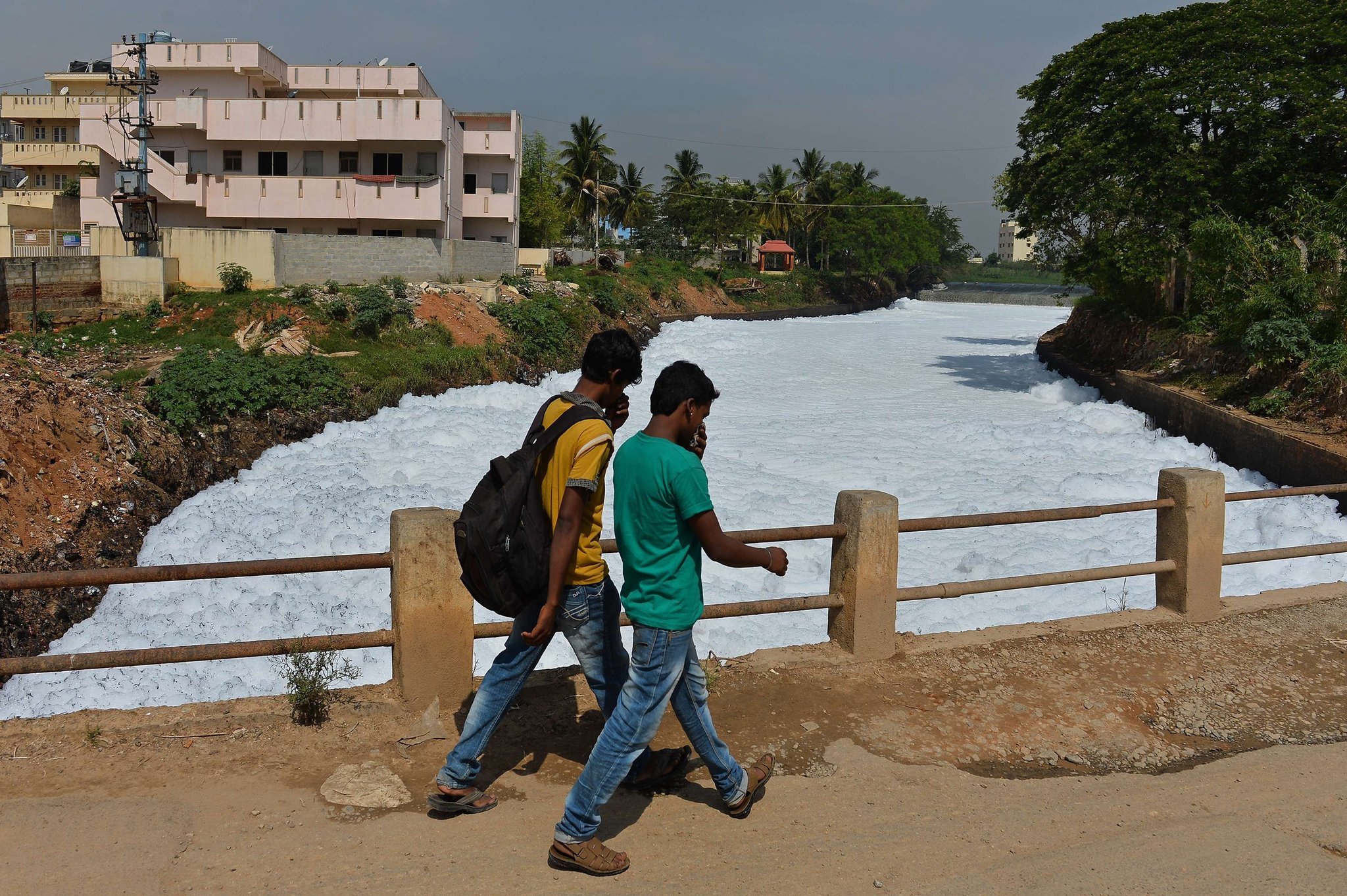In India, a good number of urban lakes are large cesspools. Water channels, lifeline of waterbodies, are largely encroached and converted into open drains carrying sewage water. A multi acre polluted water lake is certainly not a healthy ecosystem as it pollutes air with an unbearable stink, contaminates ground water and its frothing could potentially cause fires. It is time to avert a natural disaster that is looming large. There are four things that could be initiated to minimise sewage inlet to the urban lake bodies. Lake rejuvenation is no mean task but an individual can make significant contribution towards reducing it. Sustainable living comprises of modern comfort. It is certainly a discomfort. But the discomfort is worth for ensuring future lives safe for others.
There are ‘certain given things’, that can’t be undone in rejuvenating urban water bodies. There’s no excuse and one has to work within these limitations.
- Lake encroachment is common and current landscape could be a dumping ground or an open defecating piece of land
- Sewer is the inlet source for the lake, most of the earlier water channels to the lakes in the urban areas are current major sewer drains
- A large number of housing complexes lack Sewage Treatment Plant (STP), releasing untreated water into open drains
- A good portion of the city’s drain does not fall under underground drainage system, flowing off precious rain water along with the open drains during monsoons
There are ‘certain doable actions’ that can negate and reduce stress on urban drain systems that feed into water bodies. However, there’s great level of discomfort in practicing some of these lake saving initiatives.
- Ask, trace and find yourself what’s the source of water, potable or otherwise, that makes our living comfortable? Answers give a sense revelation that all is not well and one has to source water from miles away. It is a privilege to receive piped clean water every day. Therefore, it is important that one understands the source, and understands the importance of having the basic need. It is important that children are made aware of such facts to appreciate the privilege. It is important to respect the finite natural resources and use them judiciously.
- Observe the quantity of release and track end destination of the home drain or sewage water. There are common findings across urban areas – huge amount of per capita water usage, equal amount of discharge, and untraceable water discharge points. One may trace the discharge point to one of the open drains leading to a large water body. These open drains of today were once lifeline of the fresh water channels filling these lakes. It is critical to ask ourselves tough questions. Are we not equally responsible, more so individually, for the pollution? It is time we accept the harsh realities and make efforts to reduce the intake and minimise the outlet.
- It is common a site that urban local water bodies are frothing white foam across major cities in India. It is a national furor without any solution whatsoever. It is important to note that the large portion of the drain water is detergent and more so the lake. It is untreated water that is frothing. One may argue that this is also due to large industrial pollution. But a big chunk of contribution is also from the homes discharging directly into drains. The simplest solution to reduce drain contamination is to reduce the usage of chemical based home and toilet disinfectants. However it has to be conscious choice while deciding the appropriate disinfectants that are non-chemical and less harmful. The change has to begin individually and the best place to begin is at the home.It is time to own responsibility, more so individually, to make best efforts to reduce the stress on waterbodies thereby saving some goodness to the future generations.
About the Author: Nirbhay K is a CSR professional and an IIT alumnus. Author can be reached @NirbhayK2.
The views and opinions expressed in the article are solely of the author in personal capacity and do not in any way represent views of any institution, entity or organisation that the author may have been associated with.
Thank you for reading the story until the very end. We appreciate the time you have given us. In addition, your thoughts and inputs will genuinely make a difference to us. Please do drop in a line and help us do better.
Regards,
The CSR Journal Team

